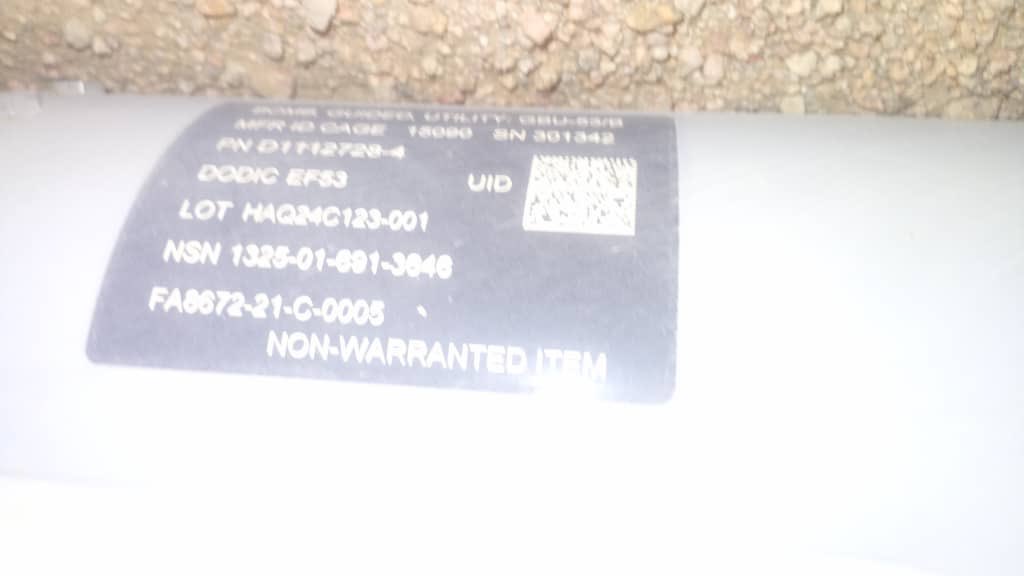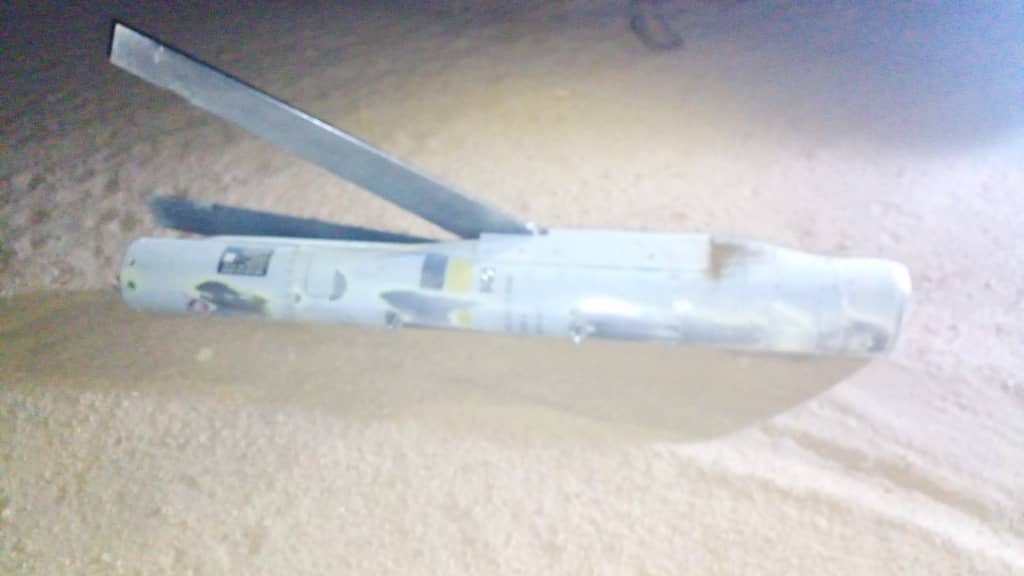With the United States striking the Yemen-based Houthi militia group, an American GBU-53/B StormBreaker glide bomb in a near-intact state has appeared in Yemen. The discovery raises fears of a latest and advanced US weapon falling into the hands of America’s adversaries.
The United States has been bombing the Yemen-based Houthis militia group for nearly six weeks now, in an attempt to cripple the Iran-backed group. The US Central Command (CENTCOM) started the bombing in mid-March, just as the Houthis warned they would resume their attacks on Israel.
Houthis have launched multiple strikes on US, Israel, and other Western ships passing through the Red Sea since at least 2023, jeopardising global trade.
Trump, on his part, has vowed to annihilate the group, emphasizing that the US would use “overwhelming lethal force” until the Houthis ceased their attacks. And that’s exactly what it has been doing since, also using the Stormbreaker.
The photos of the GBU-53/B StormBreaker glide bomb slightly buried in sand appeared on social media on April 24. The image was geolocated to the Shabwah governorate’s Asilan area in southeastern Yemen by Open-Source Intelligence (OSINT) analysts.
The weapon could be seen with its pop-out wings, half deployed. It may have failed to detonate due to the sand.
It is currently unclear how the missile ended up unexploded in the sand in the first place. A host of scenarios, ranging from technical malfunction to electronic warfare (EW) jamming, could typically be responsible. However, it appears unlikely that the missile was brought down by a surface-to-air missile.

Some military bloggers, including OSINTDefender on the social media site X, pointed out that the weapon was seen on an F/A-18E “Super Hornet” in March—an aircraft that has been extensively involved in bombing operations against the Houthis.

The discovery of an almost fully intact missile in Yemen is concerning, as the missile can now fall into the hands of the Houthis.
The United States, like all other technologically advanced militaries, remains wary of its weapons falling into the hands of the adversary, which could then gain access to sophisticated American technology, including sensors, radar technology, and electronics.

Houthis could eventually turn over the missile to Tehran, which is notorious for reverse engineering US weapons.
Several US weapons have fallen into Iran’s hands in the last few years. For example, a US RQ-170 stealth drone reportedly crashed in Iran in December 2011 due to Iranian cyber warfare, and was found to be mainly undamaged.
Iranian engineers allegedly reverse-engineered the RQ-170, creating its Shahed-191, also known as Saeghe.
However, Iran is not the only adversary that managed to get its hands on a US weapon. During the Second Taiwan Crisis of 1958, the Republic of China Air Force (RoCAF) engaged in a series of intense air combat with the Chinese People’s Liberation Army Air Force (PLAAF).
During one of those combats, the PLAAF was able to recover an AIM-9X Sidewinder missile, which was considered one of the best in the American arsenal at the time.
The missile was later transferred to the former Soviet Union, where engineers copied the missile’s infrared tracking, in-flight steering, and stability mechanisms and developed their own self-guided missile, known as the Vympel K-13 (NATO codename ‘AA-2 Atoll’).
More recently, Russia has captured different US-origin platforms in the ongoing Ukraine war—Bradley Infantry Fighting Vehicles (IFV), Abrams main battle tanks (MBT), Javelin anti-tank missiles, and Stinger anti-aircraft systems, to name a few.
There were also concerns that Moscow could recover the US MQ-9 Reaper drone after two Russian Su-27 fighters forced a US Reaper drone to crash in the Black Sea. Russia could not get hold of the cutting-edge UAV, despite widespread concerns.
The capturing of a nearly-intact Stormbreaker poses a greater risk to the US, as the relatively new and classified technology could find its way to Russia, China, or Iran.
What Do We Know About The Stormbreaker Missile?
Called “Small Diameter Bomb II” or SDB II, the Stormbreaker is an air-launched glide bomb manufactured by Raytheon Missile Systems. Designed to address targets in dynamic scenarios and adverse weather conditions, SDB-II is capable of engaging both moving and fixed targets with unparalleled precision.
The missile boasts a tri-mode seeker system that enables the bomb to penetrate fog, smoke, and rain, ensuring accurate target acquisition even in the most challenging environments. The missile can use imaging infrared millimeter-wave radar to locate targets, and use semi-active laser homing to hit a predetermined target.
StormBreaker can use an onboard datalink to communicate with the aircraft carrying it. The SDB-II’s two-way datalink enables the weapon to obtain updated target coordinates while in mid-flight. This feature enhances flexibility and efficacy in dynamic operating environments, making it easier to make real-time adjustments to mission objectives.
The network-enabled capabilities of the missile facilitate smooth cooperation between ground or aerial controllers, improving mission coordination and overall situational awareness.
Additionally, the weapon can use a GPS-assisted inertial navigation system to glide totally in the direction of the target. However, the advantage of StormBreaker goes beyond accuracy.
It features a multi-effects warhead that enhances lethality against a range of targets. The weapon, which combines blast, fragmentation, and shaped charge modes, guarantees decisive outcomes with each attack, efficiently eliminating threats on the battlefield.

Its configuration permits adaptable post-release control, enabling precise guidance by either aircrew or ground personnel. The StormBreaker can strike moving targets at a range of 45 miles and stationary targets at a maximum range of 69 miles, according to publicly available information.
According to Raytheon, the StormBreaker is the “ultimate air dominance weapon,” designed to meet the needs of the United States and its allies. The compact design of the StormBreaker, engineered to complement various platforms, maximizes payload capacity and enhances the aircraft’s combat capabilities.
In addition to the F/A-18E/F, the SDB-II is slated for compatibility and deployment on other key platforms, including the F-16C/D and F-35 aircraft. Moreover, Finland, Norway, and Germany have reportedly purchased the Stormbreaker, with more orders expected to follow.
- Contact the author at sakshi.tiwari9555 (at) gmail.com
- Follow EurAsian Times on Google News




